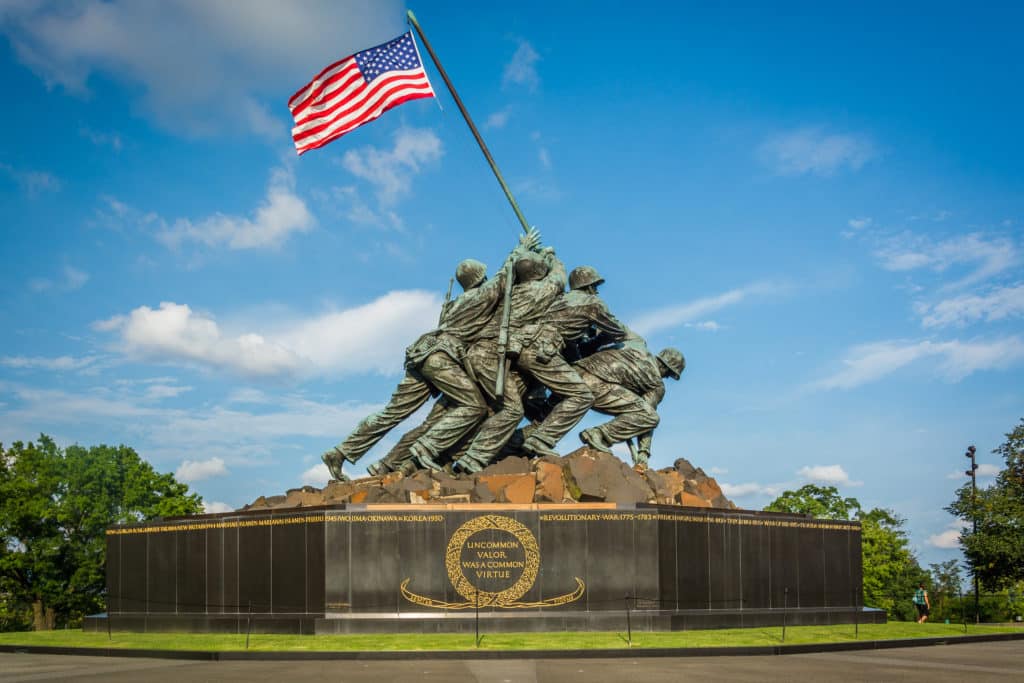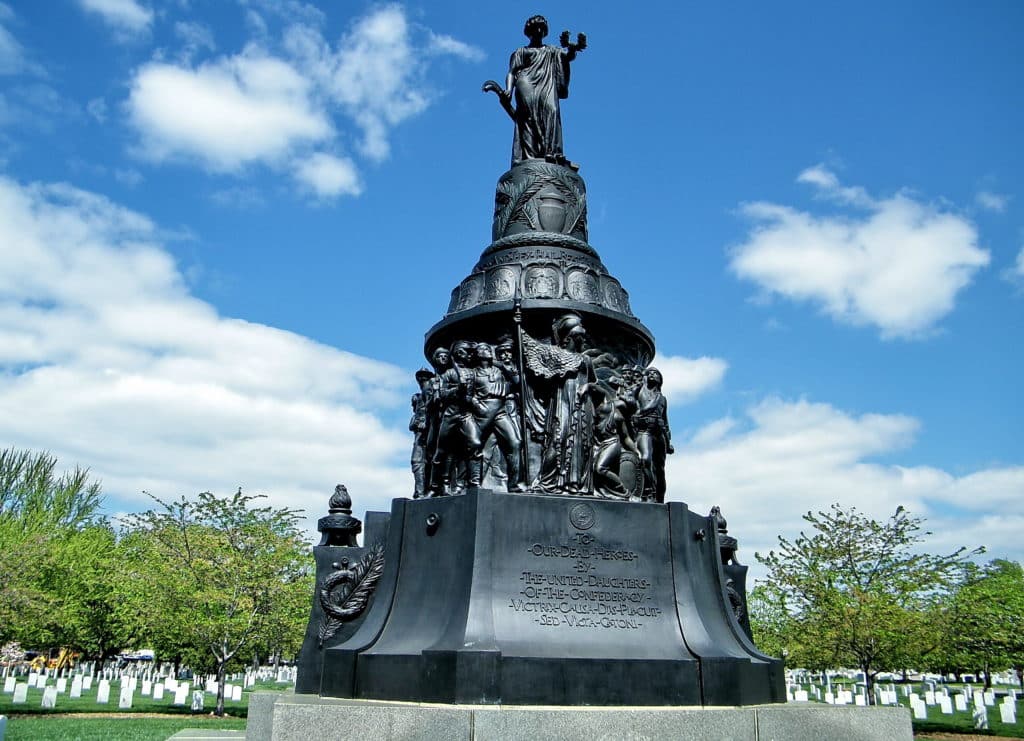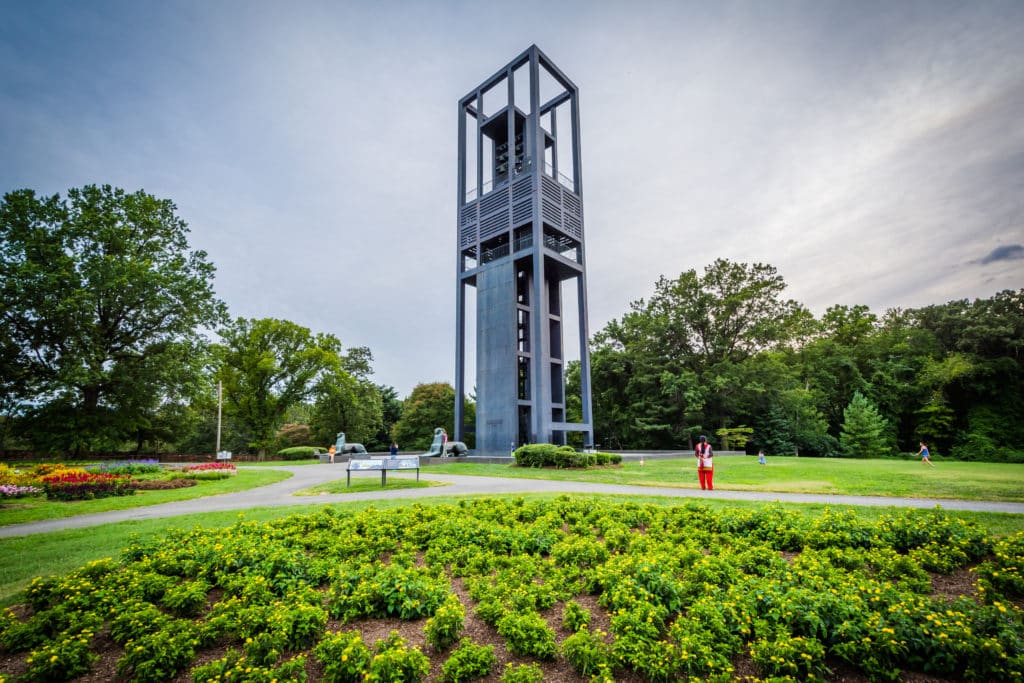
Nestled along the banks of the Potomac River is Arlington, Virginia, a county steeped in a rich history that offers a myriad of historical activities and attractions for residents and tourists alike. From its humble beginnings in colonial times to its present-day status as a bustling urban center, Arlington has undergone a remarkable journey that reflects the evolution of our nation itself.
In this article, we’ll delve into the fascinating history of Arlington, tracing its roots back to its early days and exploring the pivotal moments that have defined this extraordinary region.
Colonial Beginnings and Revolutionary Ties
Arlington’s early history is a captivating tale of Native American presence and colonial settlement, with a legacy that endures to this day. Long before European settlers arrived, the region was inhabited by Native American tribes, including the Doeg and Piscataway, who established their communities along the Potomac River. These indigenous peoples left their mark on the land, with archaeological evidence and historical accounts attesting to their presence.
The colonial era brought significant change to Arlington as European settlers began to establish themselves in the area. In 1669, the land that would become Arlington was granted to a prominent colonial figure, Lord Thomas Fairfax. It wasn’t until the mid-18th century, however, that the area started to see more extensive settlement. In 1742, a prominent figure in Arlington’s early history, William Clifton, constructed the first known European-style dwelling, known as the Clifton House, marking the beginning of Arlington’s transformation from a wilderness into a thriving colonial community.
Arlington’s historical significance was further solidified during the American Revolutionary War. The region played a vital role in the struggle for independence, as it was strategically located across the Potomac River from Philadelphia, the nation’s capital at the time. The Potomac River served as a natural barrier that General George Washington’s Continental Army needed to defend. Consequently, forts and defensive positions, such as Fort Ethan Allen and Fort Whipple, were established in Arlington to safeguard the capital from British invasions.
Today, Arlington still boasts several significant colonial landmarks that offer a glimpse into its early history. The Hume School, built in 1891, stands as a beautiful example of late 19th-century architecture and serves as a reminder of Arlington’s educational heritage. Additionally, the Ball-Sellers House, dating back to the 18th century, is one of the oldest surviving buildings in Arlington and provides a tangible connection to the region’s early colonial days. Arlington’s early history, intertwined with Native American heritage and colonial settlement, forms the foundation of its historical legacy, inviting visitors to explore its rich past through these enduring landmarks.

Arlington in the American Civil War
Arlington played an important strategic role in the American Civil War in the 1860s. Due to its proximity to Washington, D.C., it became a critical military and logistical hub for the Union Army. Union forces occupied Arlington early in the war to secure the nation’s capital, leading to the establishment of several significant military encampments, including Fort Cass and Fort Whipple. Arlington also served as a burial ground for Union soldiers, ultimately becoming the site of what is now Arlington National Cemetery.
The impact of the war on Arlington’s local population and landscape was profound. The Union’s military presence disrupted civilian life, with many residents forced to flee their homes. The landscape was forever altered by the construction of forts, fortifications, and the cemetery. After the war, efforts to reunite the nation led to the construction of the Arlington House as a memorial to Robert E. Lee and the reconciliation between North and South.
Prominent Civil War sites in Arlington serve as poignant reminders of its strategic significance during the conflict. Arlington National Cemetery, with its rows of graves honoring both Union and Confederate soldiers, stands as a solemn testament to the war’s toll. Fort C.F. Smith, a well-preserved fortification, provides a window into the region’s military history during those turbulent times. These sites not only commemorate Arlington’s crucial role during the Civil War but also underscore the enduring impact of the conflict on the collective memory of both locals and the nation as a whole.
Post-War Reconstruction and Growth
Arlington’s post-Civil War era ushered in a remarkable transformation and period of growth that fundamentally altered its landscape and positioned it as an integral part of the greater Washington D.C. metropolitan area. During the late 19th and early 20th centuries, Arlington underwent profound changes, with several key developments reshaping its character.
One pivotal development was the construction of the Arlington Memorial Bridge in the 1930s. This iconic bridge not only symbolized a physical connection between Arlington and the heart of Washington, D.C., but it also catalyzed growth and accessibility; Arlington was no longer an isolated region, but a thriving urban center.
Infrastructure and urban planning played a major role in this transformation. The expansion of public transportation, including streetcars, and later the advent of the Washington Metro, made it easier for residents to commute to jobs in the nation’s capital. Arlington transitioned from a predominantly rural area into a bustling suburban community, with housing and businesses flourishing. This also began the development of cultural and educational institutions in the area, such as George Mason University and the Arlington Arts Center.
The area’s enduring military presence was another defining factor, with the Pentagon’s establishment in 1943 solidifying Arlington’s importance in national defense. This iconic structure not only played a central role during the Cold War but continues to be a symbol of American military prowess.
In essence, Arlington’s post-Civil War reconstruction and growth were marked by connectivity, urbanization, and the integration of Arlington into the fabric of the greater Washington D.C. area. The area’s evolution from a post-Civil War recovery phase to a thriving suburban community is a testament to its adaptability and resilience in the face of change.

Arlington in the 20th Century: Modernization and Change
The 20th century brought significant modernization and change to Arlington, marked by a series of historical events and developments.
World Wars I and II had a profound impact on Arlington. During World War I, Camp Humphreys (now Fort Belvoir) and Camp A.A. Humphreys (now Joint Base Myer-Henderson Hall) were established, contributing to the county’s military presence. World War II further accelerated Arlington’s growth when the Pentagon was constructed, cementing its role in national defense.
The Civil Rights Movement left an indelible mark on Arlington, as the county grappled with desegregation and the fight for civil rights in the mid-20th century. Following the landmark Brown v. Board of Education decision in 1954, Arlington began the process of desegregating its schools amid resistance and tension. Local activists, including the Arlington NAACP chapter, played a crucial role in advocating for equal educational opportunities. Civil rights protests and demonstrations, such as the 1960 sit-in at Cherrydale Drug Fair, highlighted Arlington’s commitment to challenging segregation.
Economically, Arlington witnessed significant changes as it evolved from a primarily agricultural and military-based economy to a more diverse and dynamic one. The arrival of numerous federal agencies and businesses, brought on by its proximity to the nation’s capital, led to an economic boom. Arlington’s strategic location, access to skilled labor, and thriving business environment made it a hub for technology and innovation, with the emergence of modern business districts like Rosslyn and Ballston further solidifying its reputation as a center of economic growth and development.
During this time, Arlington also experienced a demographic shift. As the county evolved economically and socially, its population became increasingly diverse, mirroring the broader changes in the United States. Waves of immigrants and a growing population contributed to a vibrant cultural mix, enriching the community with a tapestry of backgrounds and perspectives. This demographic transformation fostered a dynamic, inclusive environment that continues to shape Arlington’s identity as a welcoming and cosmopolitan community today.
Key modern landmarks emerged during this period as well. Crystal City, a major business and residential district, became a symbol of Arlington’s urban development and economic growth. Additionally, the Arlington Courthouse, a bustling hub for county government, stood as a testament to Arlington’s administrative importance. These landmarks, alongside iconic structures like the Pentagon and Arlington National Cemetery, define the county’s landscape, embodying its dynamic, modern character while paying homage to its rich history.
Historical Landmarks and Sites Today
Arlington is home to many historical landmarks that offer residents and tourists a glimpse into the region’s past while serving as important sites of remembrance, education, and tribute to those who have contributed to the nation’s history and defense. The top 8 historical landmarks and sites in Arlington are:
1. Arlington National Cemetery:
Established during the Civil War, Arlington National Cemetery is one of the most iconic burial grounds in the United States. It serves as the final resting place for countless military personnel, including presidents, dignitaries, and veterans. The cemetery is still active and open to visitors who come to pay their respects.
2. The Tomb of the Unknown Soldier:
Located within Arlington National Cemetery, the Tomb of the Unknown Soldier is a symbol of reverence for all unidentified American service members who gave their lives. The site features a changing of the guard ceremony and remains an active place of honor and remembrance.
3. Arlington House, The Robert E. Lee Memorial:
Built by George Washington Parke Custis and later the home of Confederate General Robert E. Lee, this mansion served as the pre-Civil War estate of the Lees. It is a National Park Service site and offers guided tours that explore the historical significance of its former occupants.
4. Fort Myer:
Established during the Civil War, Fort Myer is an active U.S. Army post with a storied history. It played a role in early military aviation and continues to serve as a military installation today.
5. The Pentagon:
Constructed during World War II, the Pentagon is the headquarters of the United States Department of Defense. It is one of the largest office buildings in the world and remains a central location for military operations and administration.
6. The Netherlands Carillon:
A gift from the Netherlands to the United States in gratitude for American aid during and after World War II, this carillon stands as a symbol of international friendship. It is located near Arlington Cemetery and continues to be a symbol of goodwill.
7. Air Force Memorial:
This modern landmark honors the men and women of the United States Air Force and their contributions to national defense. It is a striking contemporary sculpture that stands as a tribute to aviation history.
8. Arlington Historical Museum:
Housed in the former Hume School, the Arlington Historical Museum showcases artifacts and exhibits that explore the county’s history. It provides visitors with insights into Arlington’s past and its role in the broader context of American history.

The People of Arlington: Figures Who Shaped the City
Over the years, Arlington has been shaped by a diverse array of notable figures who have etched themselves into its political, social, and cultural landscape.
One of the most well-known figures in Arlington’s history is Robert E. Lee, who lived at Arlington House before the Civil War and later commanded Confederate forces during the conflict. His association with the estate and subsequent memorialization significantly influenced Arlington’s historical identity.
Another prominent figure, Charles Drew, an African American physician, made significant contributions to the field of medicine and blood banking. He worked at Howard University and Freedman’s Hospital (now Howard University Hospital) in Arlington, advancing medical research and education.
Senator Henry “Scoop” Jackson, known as a key political figure, played a crucial role in advocating for the expansion of Arlington’s military presence during the Cold War, including the development of the Pentagon.
Notable community leaders like Evelyn Reid Syphax and William T. Newman Jr. were instrumental in advancing civil rights and equality in Arlington during the mid-20th century. They fought for desegregation, fair housing, and social justice.
Arlington’s cultural heritage was enriched by figures like Julia Davis, a renowned African American artist known for her vibrant paintings, and Langston Hughes, the celebrated poet, novelist, and playwright who left his mark on American literature. Hughes, although not an Arlington native, spent time in the area and contributed to the county’s cultural tapestry with his literary prowess.
These notable figures, among many others, have significantly influenced Arlington’s development, leaving a lasting legacy that continues to shape the county’s character and values.
Preserving Arlington’s Heritage
Arlington takes its commitment to preserving its rich heritage seriously, with ongoing efforts in historic preservation and education. The Arlington Historical Society and the Arlington Historical Museum play pivotal roles in safeguarding the county’s history. They curate exhibits, host educational programs, and maintain archives that allow residents and visitors to immerse themselves in Arlington’s past.
The Arlington County government also actively participates in preserving the county’s historical assets. The Historical Affairs and Landmark Review Board (HALRB) oversees the designation of historic landmarks and works to protect them from alteration or demolition. Arlington’s historic preservation program encourages the preservation of historic properties through incentives and regulations.
In addition, Arlington’s educational initiatives include programs in local schools that emphasize the importance of Arlington’s history. The Arlington Heritage Alliance collaborates with educators and local organizations to promote historical education.
These collective efforts ensure that Arlington’s heritage remains accessible and cherished by future generations while fostering a deeper appreciation for the county’s history and culture.
Arlington History: Key Takeaways
Understanding Arlington’s history into the identities of both the county and the nation and the forces that have shaped them. By exploring Arlington’s historical sites, you can connect with the past, gain a deeper appreciation for its cultural diversity, and recognize the significance of its contributions to American history. So, take a step back in time, visit the landmarks, and discover the stories that have made Arlington what it is today. Start your journey into Arlington’s history by visiting Arlington National Cemetery, the Arlington Historical Museum, The Waycroft in the historic Ballston neighborhood, and other local historical sites. Your exploration will not only enrich your knowledge but deepen your connection to this vibrant community.
